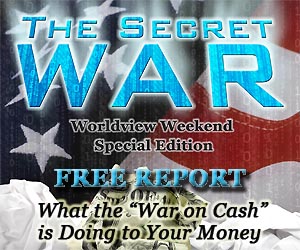Nagasaki: Lessons Forgotten
75 years ago, August 6, 1945, an A-bomb destroyed Hiroshima. Three day later, August 9, 1945, a second A-bomb obliterated Nagasaki.
The atomic bombing anniversary has become a time for public debate.
Since publication of John Hershey’s Pulitzer prize-winning book “Hiroshima” (1946) the first atomic bombing has become synonymous for both Hiroshima and Nagasaki. Hiroshima has even become a new word in English and other languages for describing any catastrophe, especially catastrophes of great magnitude and inhumanity.
Overwhelmingly, academic and media opinion use Hiroshima to make emotionally charged condemnations of America and hysterical appeals to “ban the bomb.”
Strategic realists and most military historians disagree with the above:
--Atomic bombing of Hiroshima and Nagasaki ended World War II, the most destructive war in history costing 60 million lives.
--War with or without nuclear weapons is horrific and inhumane, like the March 1945 incendiary bombing of Tokyo, designed to cause a massive firestorm that burned to death more people than died at Hiroshima or Nagasaki.
--The atomic bombings spared one million U.S. and several million Japanese casualties that probably would have resulted from invading Japan’s home islands.
--Nuclear deterrence enabled the U.S. to defeat the USSR in the Cold War, peacefully, without a thermonuclear World War III, and has deterred recurrence of another great war, so far.
However, both sides of the great debate over the wisdom of nuclear weapons and the long-term efficacy of nuclear deterrence should pay more attention to Nagasaki. Nagasaki, the second atomic bombing, was not identical to Hiroshima, and has its own important lessons for Mankind.
Nagasaki, technologically and strategically, was more important than Hiroshima.
Technologically, the Hiroshima “Little Boy” A-bomb was a simple gun-type uranium-fueled design that was a technological dead end.
The Nagasaki “Fat Man” A-bomb was a much more sophisticated implosion-type plutonium-fueled design that opened the “Pandora’s Box” to more powerful weapons, including H-bombs.
Strategically, the Nagasaki A-bomb was an early entrant in nuclear arms racing between nations, and between competing U.S. scientists, developed by a rival design team that technologically eclipsed the much less sophisticated Hiroshima A-bomb.
Why develop two different A-bombs?
To make sure one of the A-bombs would work. To make sure the U.S. would beat Nazi Germany to the A-bomb. We did not know it at the time, but the U.S. was also in an atomic arms race with Japan, as Tokyo was also working on the bomb. (See Robert Wilcox, “Japan’s Secret War” 1995.)
The technological and strategic dynamics that produced the Nagasaki A-bomb set the pattern for nuclear arms racing between the U.S. and USSR during the Cold War.
The decades-long Cold War struggle to deter, or prevail in, nuclear war resulted in arms racing by both sides to gain advantage, or cancel technological advantage by the other side, producing ever more powerful nuclear weapons; specialized tactical nuclear weapons for battles on land, sea, and air; and bombers, intercontinental missiles, missile submarines and other means for delivering nuclear strikes.
As noted above, the U.S. eventually won the Cold War, prevailing over the USSR peacefully by achieving first superiority, and later maintaining parity, in the nuclear balance.
Thus, the lesson from both World War II and the Cold War nuclear competition is to be sure not to lose. Do not let the other side gain a potentially decisive nuclear advantage if you want to survive—and win.
Unfortunately, Washington has forgotten the nuclear lessons of World War II and the Cold War. Since the end of the Cold War, the U.S. has so neglected its nuclear deterrent and fallen so far behind potential adversaries that the U.S. may never catch-up. For example:
--Russian nuclear forces command an at least 10-to-1 advantage in tactical nuclear weapons and 3-to-1 advantage in nuclear weapons overall (strategic and tactical).
--Russia has technologically new types of advanced nuclear weapons and delivery systems that have no counterparts in the U.S.
--U.S. modernization plans for bombers, ICBMs, and missile submarines and their nuclear weapons will not be accomplished for decades.
U.S. Cold War consensus on maintaining nuclear parity, yielding no nuclear advantage to potential adversaries, is broken. Many Democrat leaders agree with radical anti-nuclear activists that the U.S. should lead the way toward “banning the bomb” by reducing nuclear weapons to a minimum deterrent unilaterally.
2020, in addition to being 75 years since Hiroshima and Nagasaki, is the 80th anniversary of the Fall of France to Nazi Germany in 1940. This tragedy historian and French resistance martyr, Marc Bloch, in his post-humous book “Strange Defeat” (1946) attributed to the death of patriotism and loss of faith in the ideals of France.
Is normalizing hatred of America in politics, media, universities, and on the streets inviting nuclear aggression from Russia, China, North Korea, or Iran, and risking another “Strange Defeat”?
The most important lesson of Nagasaki—the United States, the most benign and humanitarian nation in history, was willing to strike Japan with all its nuclear might to achieve victory. What might dictators in Moscow, Beijing, Pyongyang, or Tehran do against a nuclear weakened and deeply demoralized America?
• Dr. Peter Vincent Pry, director of the Task Force on National and Homeland Security, served as chief of staff on the Congressional EMP Commission, and on the staffs of the House Armed Service Committee and the CIA. He is author most recently of “The Power And The Light” (Amazon.com).
We're a 100% Listener Supported Network
3 Simple Ways to Support WVW Foundation
Make Monthly Donations
-or-
A One-Time Donation
-
Mail In Your Donation
Worldview Weekend Foundation
PO BOX 1690
Collierville, TN, 38027 USA -
Donate by Phone
901-825-0652














